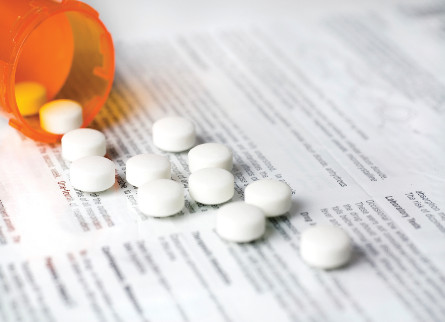Clinical

Prescription drug abuse common
In Clinical
Let’s get clinical. Follow the links below to find out more about the latest clinical insight in community pharmacy.Bookmark
Record learning outcomes

Abuse of prescription drugs, often sourced from internet pharmacies, is common, according to a study of 5,572 people published in BMC Psychiatry.
The survey found that 3.9, 6.2 and 5.7 per cent of British people between 12 and 49 years of age had taken prescription stimulants, opioids and sedatives respectively for non-medical reasons in the preceding year. Over their lifetimes, 9.1 per cent had taken non-medical prescription stimulants, 14.6 per cent opioids and 10.1 per cent sedatives. Among non-medical users of prescription sedatives and opioids in the last year, 48 and 43 per cent respectively had also used illicit drugs.
The British data came from a larger study of 22,070 people in Denmark, Germany, Spain, Sweden and Great Britain. This study found that being prescribed a stimulant increased the risk of non-medical use 7.8-fold. Being prescribed an opioid or sedative increased the risk of non-medical use 8.8 and 10.5-fold respectively.
People with a history of “serious†psychiatric “distress†were 4.5, 3.2 and 4.2 times more likely to have used non-medical prescription stimulants, opioids and sedatives in the last year. People with a sexually transmitted disease were 7.2, 4.6 and 3.9 times more likely to have used them, while ADHD increased the risk 9.5-fold for stimulants and 3.5 and 5.1-fold for opioids and sedatives respectively. HIV increased the risk 15.1, 18.9 and 12.2-fold respectively.
Sharing medicines commonplace
Sharing by friends and family was the commonest source, reported by 46.6 per cent of stimulant users, 44.0 per cent of opioid users and 61.4 per cent of sedative users. Drugs were obtained fraudulently from doctors by 22.6 per cent of stimulant users, 15.5 per cent of opioid users and 18.9 per cent of sedative users.
Internet pharmacies were used by 7.6 per cent of stimulant abusers, 4.1 per cent of opioid users and 2.7 per cent of those taking non-medical sedatives. About 20-30 per cent of abusers used more than one source. The study authors conclude that international collaboration needs to monitor and target interventions at people
at the greatest risk of non-medical prescription drug use.
(DOI 10.1186/s12888-016-0909-3)
